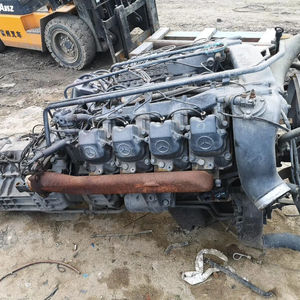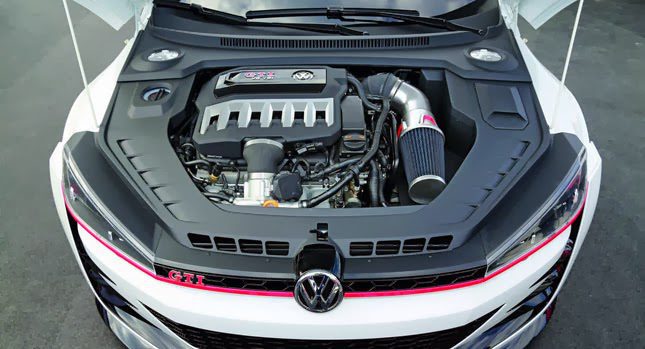Opel Corsa Engine: Every Little Thing You Need to Know Before Acquiring
Opel Corsa Engine: Every Little Thing You Need to Know Before Acquiring
Blog Article
Exploring the Inner Operation of a Compact Vehicle's Engine System
As motorists, we frequently take for granted the detailed procedures that take place within the confines of our automobile's engine system. In this expedition of a small car's engine system, we will unwind the internal workings of this mechanical harmony, losing light on the enigmas that drive us onward on our day-to-day trips.
Burning Process Overview
The combustion procedure in a compact lorry's engine system is a vital device that successfully transforms fuel into energy to power the vehicle. This procedure occurs within the combustion chamber of the engine, where fuel and air mix, fire up, and generate controlled explosions. The combustion procedure is composed of 4 major stages: consumption, exhaust, power, and compression.
During the consumption phase, the piston moves downward, pulling in a mix of air and fuel right into the burning chamber. The next stage, compression, involves the piston relocating upward, pressing the air-fuel mixture to boost its potency. Consequently, in the power stage, the stimulate plug stirs up the pressed mix, leading to a fast expansion of gases that compels the piston pull back. This descending activity produces the power needed to drive the vehicle. Ultimately, in the exhaust phase, the scorched gases are removed from the combustion chamber through the exhaust shutoff, preparing the chamber for the following cycle. This cyclic burning procedure is essential to the operation of a portable vehicle's engine system, guaranteeing effective power conversion for propulsion.
Piston and Cylinder Interaction

The piston's precise fit within the cyndrical tube is essential for maintaining optimal compression and preventing power loss throughout combustion. Limited clearances between the piston and cylinder walls guarantee efficient securing, permitting the piston to relocate smoothly without allowing gases to leak past. Proper lubrication is likewise vital to reduce rubbing and put on between these parts, enhancing longevity and performance.
Furthermore, the style and materials used in manufacturing the piston and cyndrical their explanation tube effect engine efficiency and sturdiness. Modern engines frequently utilize light-weight yet sturdy products like aluminum alloys for pistons and cylinder liners to lower inertia and enhance thermal efficiency. On the whole, the unified interaction in between the piston and cylinder is essential to the engine's capability and total efficiency.
Fuel Injection System Capability
Gas injection systems in portable car engines play an essential function in specifically supplying fuel to the combustion chamber for reliable and regulated ignition. The fuel injection system functions by infusing fuel right into the burning chamber at the optimum minute throughout the engine's operation (opel corsa engine). This accurate timing guarantees that the fuel blends equally with the air for proper burning, resulting in enhanced fuel effectiveness and reduced discharges
There are mainly two sorts of fuel injection systems utilized in portable vehicle engines: port gas shot (PFI) and straight gas shot (DFI) PFI systems infuse gas into the intake port prior to the intake valve, while DFI systems inject fuel straight into the combustion chamber. Both systems have their advantages, with DFI supplying better fuel atomization and PFI offering a more economical option.
Understanding Engine Cooling Mechanisms
Reliable operation of a compact automobile's engine here depends greatly on the performance of its cooling devices. The air conditioning system in a small car usually consists of several parts functioning with each other to manage the engine temperature level. Recognizing these engine air conditioning systems is crucial for preserving the efficiency and long life of a compact vehicle's engine system.

Exhaust System Parts Explained
The ideal functioning of resource a compact car's engine cooling mechanisms depends on a complementary system recognized as the exhaust system, which consists of various important components for guaranteeing efficient discharges and engine efficiency. The exhaust manifold collects exhaust gases from the engine's routes and cyndrical tubes them to the catalytic converter.
One crucial element of the exhaust system is the oxygen sensing unit, which keeps track of the oxygen degrees in the exhaust gases to aid control gas intake and ensure optimum engine efficiency. opel corsa engine. Furthermore, the resonator may exist in some exhaust systems to reduce sound levels. Generally, the exhaust system plays a vital duty in preserving engine effectiveness, minimizing hazardous emissions, and guaranteeing a quieter driving experience for portable lorry owners

Verdict
In conclusion, the small automobile's engine system is an intricate mix of elements that function with each other to help with the combustion procedure, transform gas right into power, and expel waste gases. Comprehending the inner operations of the engine system, consisting of the piston and cyndrical tube communication, gas shot system, engine air conditioning devices, and exhaust system components, is vital for maintaining optimum efficiency and effectiveness of the car.
The burning procedure in a compact automobile's engine system is an essential device that efficiently converts fuel into energy to power the car.Fuel injection systems in small car engines play an important duty in exactly providing gas to the burning chamber for controlled and efficient ignition.There are mainly two kinds of gas injection systems utilized in compact car engines: port fuel injection (PFI) and direct fuel shot (DFI) Recognizing these engine air conditioning devices is essential for maintaining the efficiency and long life of a small lorry's engine system.
The optimal performance of a small automobile's engine air conditioning mechanisms depends on a complementary system recognized as the exhaust system, which makes up different necessary elements for making certain efficient exhausts and engine performance.
Report this page